By Sadie Friend
This summer I had the opportunity to be a part of a National Science Foundation funded research project entitled Exploring Globalization Through Archaeology. This project allowed me and nine other undergraduate researchers to travel to the small Dutch Caribbean island of Sint Eustatius (also called Statia by its citizens), where we conducted archaeological and bioarcheological research on two different sites. One-half of our team excavated areas of a sugar plantation and the other half excavated areas of an unmarked 18th century cemetery, where individuals of African ancestry were buried. As a member of the bioarchaeology team, I excavated graves that were eroding out of a bluff side to preserve the remains of these individuals and the invaluable information contained in the burials.
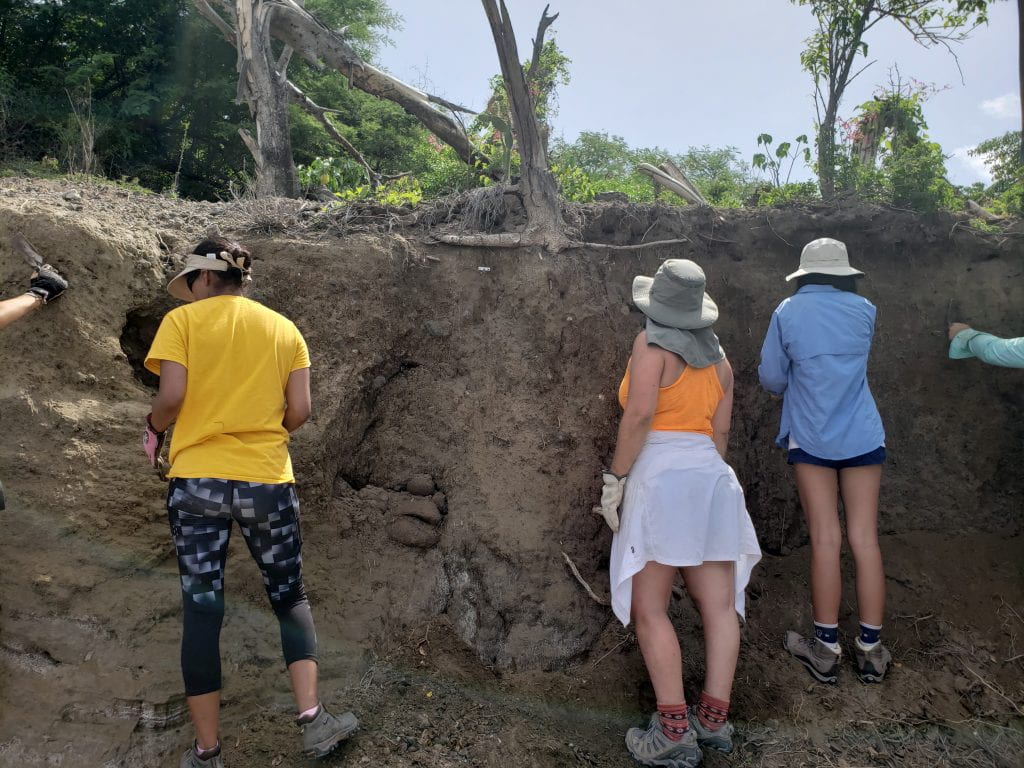
My teammates and I (center) preparing to excavate the bluff side.
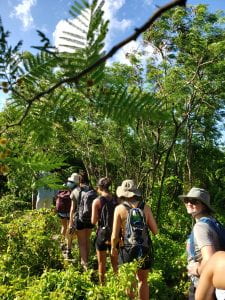
Hiking through the forest on our first day in the field.
Each morning, my five roommates and I would wake up around 6:00 A.M. and grab a quick breakfast, and then rendezvous with the rest of our cohort on the Caribbean Netherlands Science Institute (CNSI) patio. CNSI is no Ritz-Carlton, but I remember it fondly; some of my best memories were made there. The air conditioning worked extremely well, I bonded with great people (whom I will undoubtedly know throughout my career), and I had a (admittedly squeaky but comfortable) bed to sleep on. CNSI may not be the height of luxury but is a great place to stay, an awesome resource for visiting researchers, and run by an astoundingly kind-hearted and accommodating staff. At 7:00 A.M., we all squeezed into the (not-so) luxurious van and were on our way to the field. Our workdays began at roughly 7:15 A.M. and ended at 2:30 P.M. in the field or 4:00 P.M. when there was afternoon lab work. Days were tiring, humid, sweaty, and incredible.
Due to the lack of a freshwater source on Statia, the local government and utility company will occasionally declare water rationing to conserve the limited amount of water available to residents. During these times, city water can only be used from 5:00 to 8:00 A.M. and again from 5:00 to 8:00 P.M. From roughly the end of our first week to when we departed, we experienced one of Statia’s water rationing periods. Contrary to our expectations, the water rationing was not terrible, even if it was inconvenient at times. When we returned from the field, we had two options: marinate in our filth until 5:00 P.M. or take an ocean bath. I would say the latter was the most popular and, in my opinion, the most refreshing. The former is also satisfying and freeing in its own way.
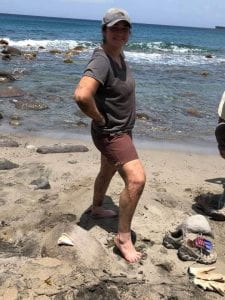
“Is this a tan-tan or a dirt-tan?” The answer is always dirt-tan (shown here by the very impressive dirt-tan line on my ankles).
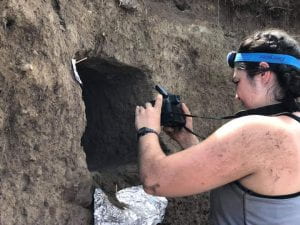
Photographing my unit.
Despite being quite physically demanding, the field work was extremely rewarding; I saved the remains of historically and socially marginalized individuals from disappearing into the ocean. These remains represent important clues about the lives of the individuals and how they were affected by the intensification of globalization occurring on Statia during the 18th century. The lives and stories of enslaved Africans are underrepresented (or misrepresented) in the historical record and this project is bringing the histories and stories of enslaved Africans on Statia to light. I am honored to be part of a project that allows me to uncover stories that are in danger of being lost. I am also grateful for the incredible opportunities and experiences this project has given me. Before my trip to Statia, I had no prior archaeological or bioarchaeological fieldwork experience. On the first day, I became a sponge—soaking up every particle of information I could. From watching the professors work to embracing my own challenges and learning from my mistakes, this field school has been the most unique educational experience thus far in my academic career. Watching and working with the professors, the teaching assistants, and my peers has imbued me with a multitude of vital lessons that have made me a better student, researcher, archaeologist, osteologist, anthropologist, and human. The skills, education, opportunities, and the professional and peer relationships I gained during this experience will prepare me for graduate school and my future academic, professional, and personal lives.
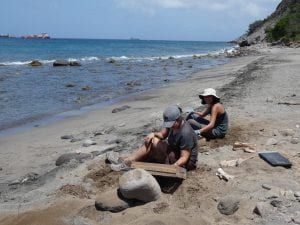
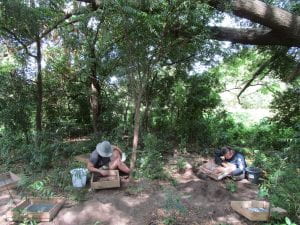
Both pictures: screening the dirt we excavated from our units. Above: screening at the cemetery site. Below: screening at the sugar plantation site.